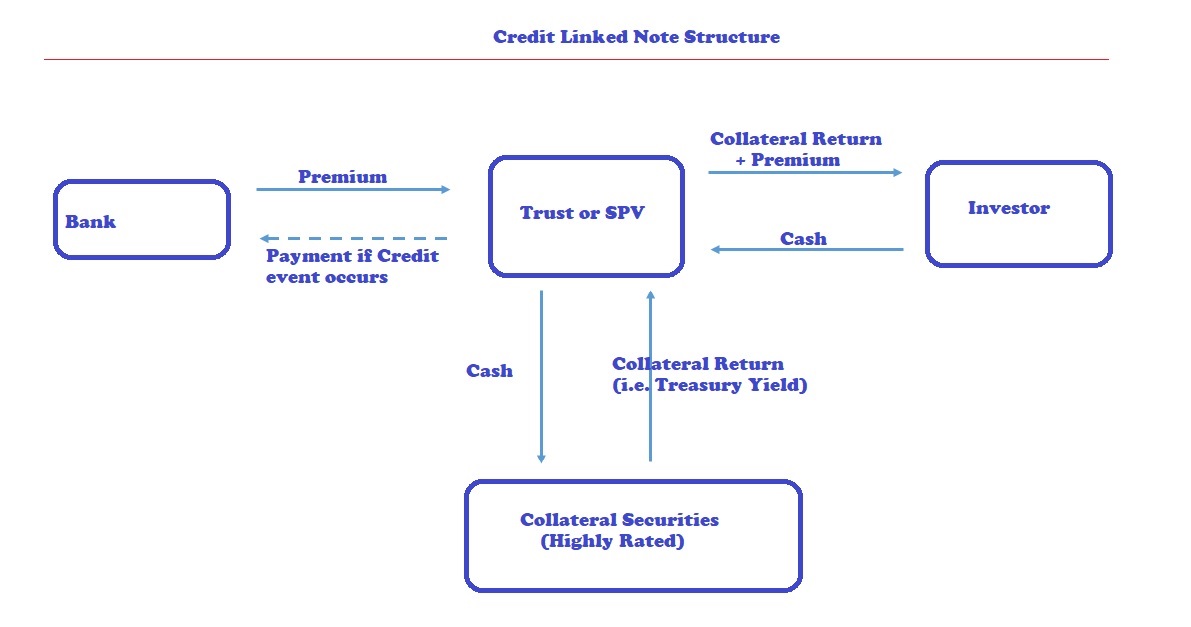It is a combination of a regular note and a credit-option. Since it is a regular note with coupon, maturity and redemption, it is an on-balance sheet equivalent of a credit default swap. Under this structure, the coupon or price of the note is linked to the performance of a reference asset. It offers lenders a hedge against credit risk and investors a higher yield for buying a credit exposure synthetically rather than buying it in the publicly traded debt. CLNs are generally created through a Special Purpose Vehicle (SPV), or trust, which is collateralized with highly rated securities.
CLNs can also be issued directly by a bank or financial institution. Investors buy the securities from the trust (or issuing bank) that pays a fixed or floating coupon during the life of the note.
At maturity, the investors receive par unless the referenced credit defaults or declares bankruptcy, in which case they receive an amount equal to the recovery rate. Here the investor is, in fact, selling credit protection in exchange for higher yield on the note.
The Credit-Linked Note allows a bank to lay off its credit exposure to a range of credits to other parties.
The below figure depicts a simple CLN structure.
